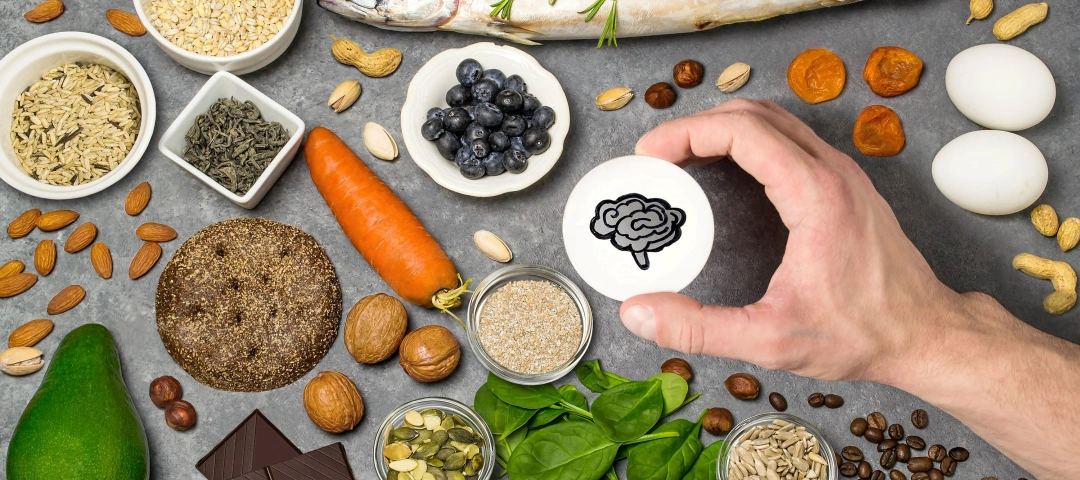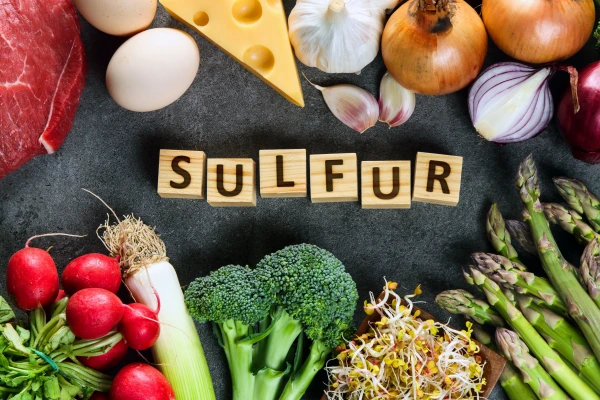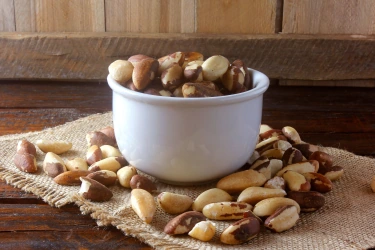Increasing Your Glutathione

Glutathione has long been called the body’s master antioxidant. It is vital for proper immune function, as well as the building up and repairing of tissues throughout your body. It is found in literally every cell of your body, and it plays a critical role in several physiological functions. In addition to supporting immune function, it helps to synthesize DNA, stimulates vitamin C and E, helps metabolize fat, contributes to the formation of sperm, and assists several enzymes.
Glutathione also counteracts a host of diseases, including cancer, liver disease, type 2 diabetes, Parkinson’s disease, Alzheimer’s disease, and chronic inflammation, such as ulcerative colitis. With all these important functions, it is disheartening to learn that your glutathione levels diminish as you age. Because of depletion over time, your health and well-being depend upon finding ways to increase your glutathione.
Sulfur-Rich Foods
Sulfur is needed to perform several vital functions, such as building your DNA and protecting your cells. It also supports healthy skin and connective tissues. Additionally, sulfur is necessary for the metabolization of food. Most importantly, sulfur is needed for glutathione production. So, naturally, adding more sulfur to your diet will increase your glutathione production. But where can we find sulfur?
Vegetables are some of the most sulfur-rich foods out there. One vegetable group high in sulfur is the cruciferous group, with favorites such as broccoli, cauliflower, cabbage and kale. Another is the allium group of vegetables, which includes onions, leeks, garlic, and shallots. Finally, leafy green vegetables are full of biotin—a sulfur-rich vitamin.
In addition to sulfur-rich vegetable, Methionine is an essential amino acid rich in sulfur. Foods containing methionine are high in sulfur and affective at raising your glutathione levels.
Animal-based sources of sulfur-containing methionine include eggs, turkey, beef, chicken, and fish. Some plant-based foods that are high in methionine are whole grains, legumes, nuts, and seeds.
Try incorporating any sulfur-rich options for naturally higher glutathione levels.


Foods with Selenium
Selenium is another powerful antioxidant. It protects your cells from oxidative stress caused by excessive free radicals. Free radicals are a normal part of cellular metabolic processes and are beneficial when kept in check. What causes them to get out of balance is exposure to toxins and other pollutants. This creates an excess of free radicals, which puts your body in a state called oxidative stress. Oxidative stress leads to a host of diseases, from cancer to diabetes and from Alzheimer’s disease to stroke.
Antioxidants like selenium are the powerhouses that neutralize free radicals within the body. Another way for free radicals to get out of balance is for your antioxidant levels to become depleted. This happens as they are overworked, and as you age. When levels of selenium get low, supplementation can help bring your cells back to homeostasis.
Brazil nuts are an excellent source of selenium. One study found that a single Brazil nut per day might be linked with improved speech in people with cognitive decline. Other foods high in selenium are beef, chicken, fish, organ meats, cottage cheese, and brown rice.




Foods with Glutathione and Cysteine
Glutathione is made up of three amino acids, cysteine, glycine, and glutamic acid. The most important amino acid in glutathione synthesis is cysteine. It is also generally the first amino acid to be depleted. While cysteine is a non-essential amino acid (meaning that it is produced in the body and not needed in the diet), you can increase your bodily levels of this amino acid by consuming sources of whey protein, such as yogurt, cottage cheese, and ricotta.
Glutathione generally has low bioavailability when digested, either as a supplement or within your diet. However, there are a few foods that can increase your cellular glutathione levels. Some examples are spinach, asparagus, okra, and avocados.
Sleep and Exercise
Adequate amounts of sleep and exercise seem to improve everything. Glutathione levels are no different. Sleep and glutathione work together in a healthy cycle. Sleep increases glutathione, while healthy glutathione levels improve sleep.
Similarly, aerobic and weight training has been shown to increase resting glutathione levels in humans. While aerobic training and weight training alone are effective, the combination of the two offers the highest benefit.

Supplements
Glutathione is an antioxidant that can be successfully supplemented. There are a variety of methods with varying rates of success.
Vitamin C
A 500-mg supplement of vitamin C daily has been shown to raise blood cell glutathione levels up to 50%. This is one more way that getting enough vitamin C offers protection on a cellular level.
Milk Thistle
Milk thistle has long been used to support healthy liver function. Recent studies also suggest that it might be able to raise lowered plasma levels of glutathione. Of particular interest is silymarin, a derivation of the milk thistle plant.
Turmeric
Turmeric features a powerful antioxidant called curcumin. When taken as a supplement or through the diet, turmeric is believed to increase the activity of glutathione enzymes and raise depleted glutathione levels. Most of these studies have been on animals, so there is more research needed on humans.
Glutathione
Unfortunately, glutathione supplements are fully metabolized in the stomach and gut, making them an ineffective source of plasma glutathione.
Cysteine
Supplementing with cysteine can raise plasma levels of glutathione, depending on which form of the amino acid is used.
NAC
NAC is one form of cysteine supplementation that offers some effectiveness at raising glutathione. Like glutathione supplements, the stomach and gut hoard NAC and keep the rest of the body from benefiting from it. Also, NAC is increasingly difficult to find on store shelves. It’s currently being recalled as a legal supplement by the FDA, in favor of big-money pharmaceutical companies.
NACET
NACET is better than NAC and is excluded from the troubles with the FDA. It is far more bioavailable, with an increase from 4-6% to 60-80%. NACET can raise plasma levels of glutathione by 250%, making it by far the most effective glutathione supplement.
Nutri’s NACET also has added glycine, another ingredient in the synthesis of glutathione, and selenium and molybdenum for additional health benefits.
There are many ways to increase your glutathione levels. The best way is to combine a healthy diet with sufficient sleep, both aerobic and weight training, and NACET supplementation. Keeping healthy levels of this master antioxidant will help you to combat the many toxins and pollutants lurking everywhere you go. It will also help protect you against the degenerative diseases associated with aging.*
Your health is everything. As your glutathione levels deplete, fight back with Nutri NACET. Formulated to keep you well at the cellular level, NACET is the best way to boost glutathione. Click here to get yours today!
*These statements have not been evaluated by the FDA. This product is not intended to diagnose, treat, cure or prevent any disease.